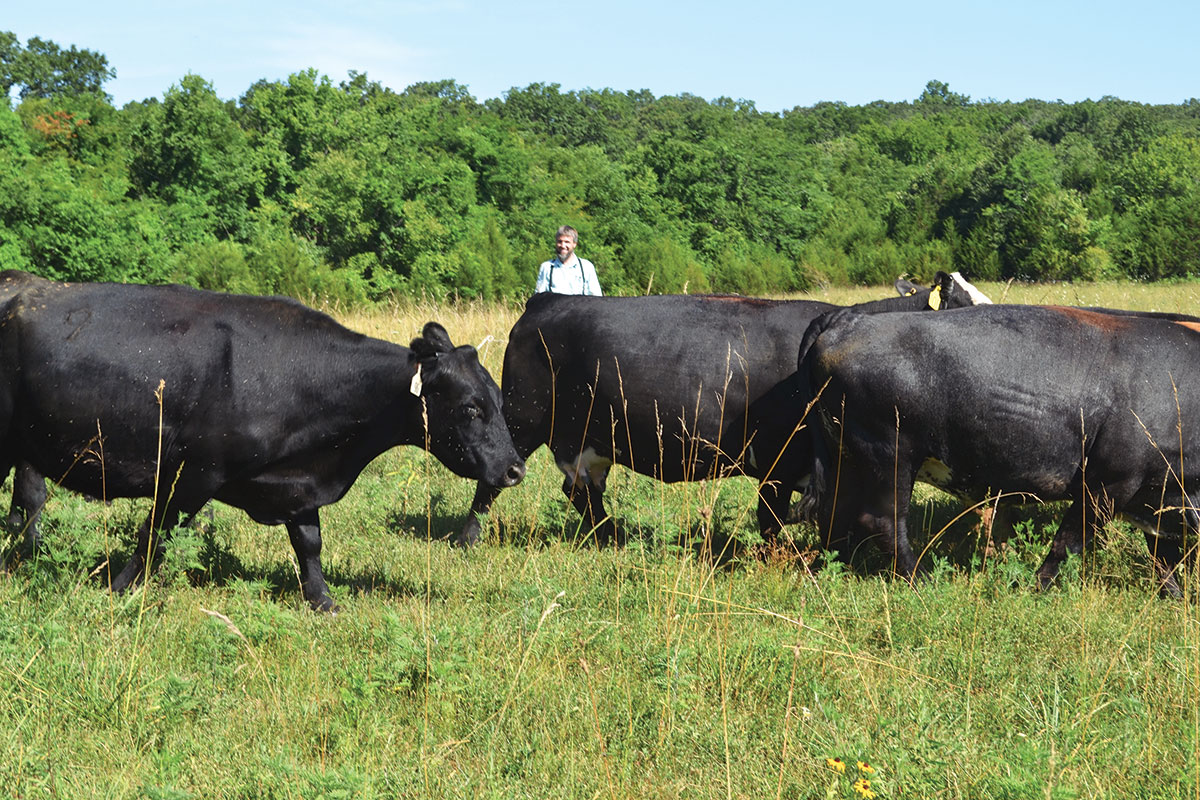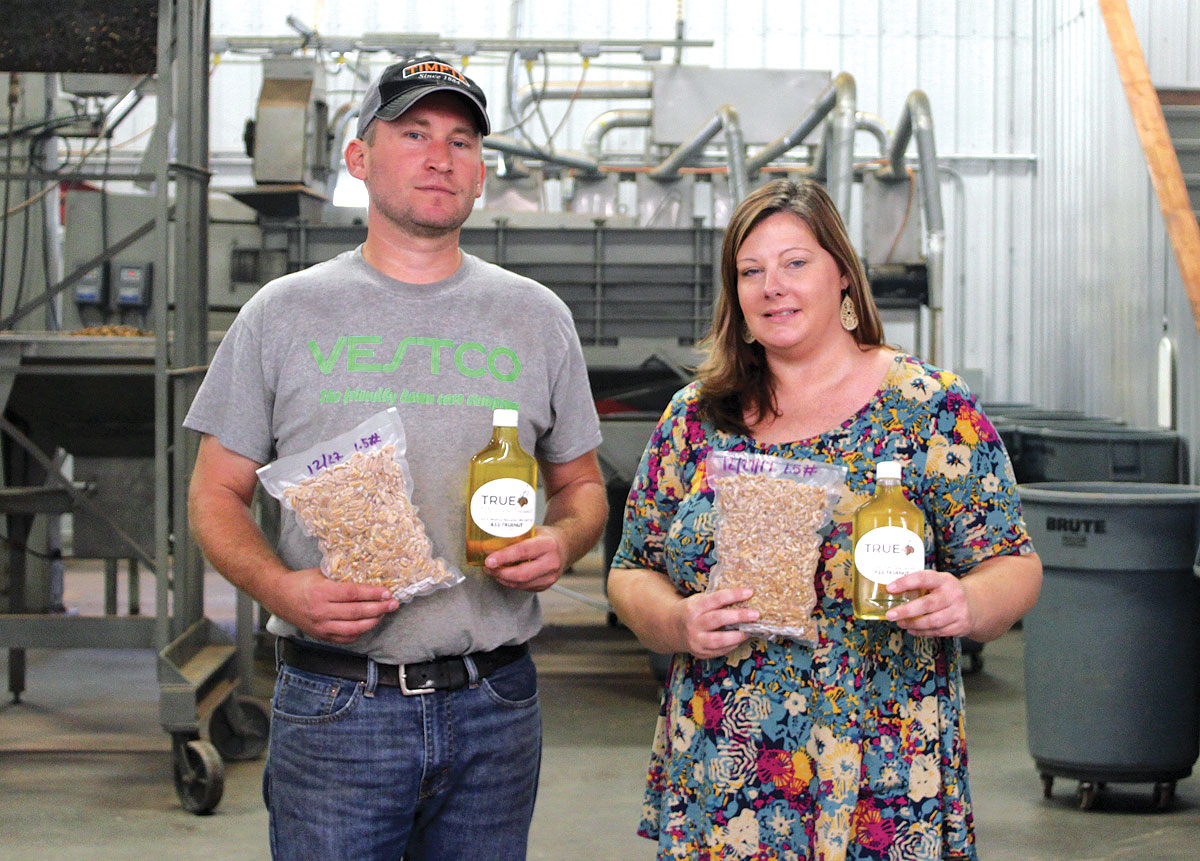 Farming in the 21st century takes hard work, direction and goals. Spencer Rawlins, who farms near Pierce City, Mo., is a farmer for the new century. Spencer has wanted to farm since helping his father on the farm when he was a boy. But, with his aim set at farming with intent, he knew that would take perspective beyond the farm he had grown up on. “It’s important to work for someone else and learn what other farmers are doing. Otherwise, we don’t improve.” At a young age, Spencer started working with large dairy farms nearby.
Farming in the 21st century takes hard work, direction and goals. Spencer Rawlins, who farms near Pierce City, Mo., is a farmer for the new century. Spencer has wanted to farm since helping his father on the farm when he was a boy. But, with his aim set at farming with intent, he knew that would take perspective beyond the farm he had grown up on. “It’s important to work for someone else and learn what other farmers are doing. Otherwise, we don’t improve.” At a young age, Spencer started working with large dairy farms nearby.
Spencer has been working on establishing his dairy for five years now and is 25 years old. He is milking 250 cows with plans for expansion, keeping large numbers of heifers that he has raised and increasing the acreage of pasture he is leasing.
Though Spencer has developed his own techniques in dairy management, the Australian style dairies where he worked when he was younger have influenced his process. “This is a 200-acre grazing dairy. Primarily they graze on perennial ryegrass all year and we use turnips as our intermediary crop in fields that are poor performers. We are seasonal, and start drying off this time of year, and start calving in February.”
Good pasture with high levels of nutrition is important in a nearly all grass-fed dairy operation. “We use a lot of foreign genetics with the grasses, that are formulated for grazing. New Zealand and Ireland are geared toward grazing, and have been doing it for years.” Spencer pastures extensively, only using grain in the barn during milking, “They get about 10 pounds of grain in the barn, the rest is grass and I supplement with corn silage in the winter.” He goes on to explain, “Rotational grazing is not new to southwest Missouri, but the intensiveness of it is. Most of the New Zealanders are using ryegrass. The fescue that is here on our pastures, Kentucky 31, is using genetics that are now over 50 years old. With the fescue toxicity, the cows don’t produce on it like they do on better quality pasture.”
Spencer also maintains that the investment in working your pasture up to a better quality, higher protein crop is economically rewarding. “It is an investment,” said Spencer. With economics as a consideration, he balances the cost of leasing per acre, and what he is getting out of the pasture, what he spends on supplements and what it costs to turn the pasture into a higher yielding food for his cows. He is currently using about 10 percent of his fields in annuals such as turnips or wheat (and sometimes a combination of radish and peas), 20 percent in BarOptima fescue, and 70 percent in Albion Ryegrass. “Ukrainians designed the Albion for their hot summers and cold winters that are similar to the conditions we have in southwest Missouri.” Though most grasses go dormant during the hot summer, Spencer is using grasses that won’t turn off, “from the second week in June until the second week of September.”
With growth and efficiency as a goal, Spencer does most of the work himself, with the help of two part-time employees. When calving starts in February, Spencer has a bottle-feeding system that is streamlined to handle a large number of heifers – which he keeps from birth, weaning, yearling, breeding, calving and then turns them out to the cow herd. “We get better every year at raising better heifers,” stated Spencer. Though bottle-feeding can be a time-intensive farm activity, Spencer batches his calves and feeds multiples in small pens. When they are a little older, he places them in the pasture with larger groups where he continues to feed them with a pull-behind bottle equipped with multiple nipples. “It’s important to get them out to the pasture as soon as possible and keep them out of the confinement of the barns that can harbor germs,” he said.
When the heifers are weaned, they are rotationally grazed, just like the milk-cows. “We get them bred at about 15 months of age, that is a little older than the typical 12-month-old breeding of dairy heifers.”
Spencer is artificially inseminating his cows with dairy crosses that work well with grazing. “I’m working towards high-producing herds. Confinement dairies have poor fertility, and grazing herds have higher fertility rates.” Since Spencer doesn’t need the higher turnaround of heifers for replacement due to high cull rates from low-producing cows and lower fertility cows, he can keep just the quality heifers that he wants to see on his farm. Keeping better quality cows on his farm longer with high fertility and low input is his goal, which can be met easier with his discrimination in genetics and better health maintained with pasturing.
The genetics that Spencer is using is predominately a Jersey/Holstein cross cow, “The smaller cows are better, they don’t mud up the fields and require less energy and have lower maintenance costs.” He is also looking for specific values in his milk as well, “For my dairy, I want higher components. Less fluid milk is being sold, and we are going towards more cheese and specialty milk products.”
As Spencer moves forward with his plans to expand, he offers encouragement to other farmers, “You can get into dairy. It’s a big investment to buy a farm, but there are dairies that aren’t being used that can be leased.” He also said that, “With grazing, you don’t need to invest as much in depreciating assets, and can invest more in land and animals which appreciate.”
Along with all the cows, Spencer lives on the farm with wife Lindsey, who is currently pursuing an upper level nursing degree at MSSU, and their two daughters, Bailey and McKenzie. He enjoys all aspects of dairy farming, “There is something new everyday.” From paperwork, working on keeping healthy cows, and working on machinery and equipment, Spencer is up for the challenge of his 21st century dairy.







